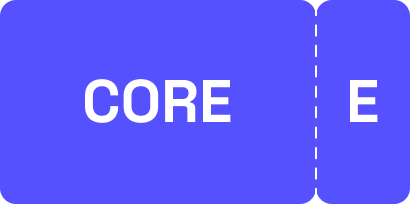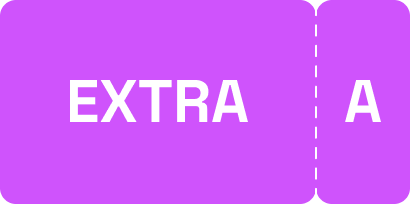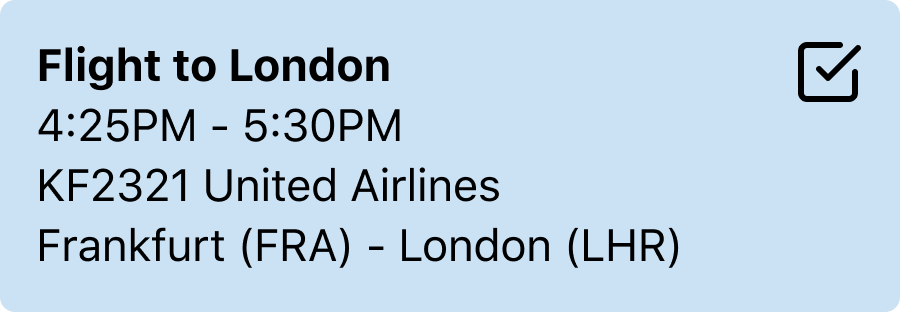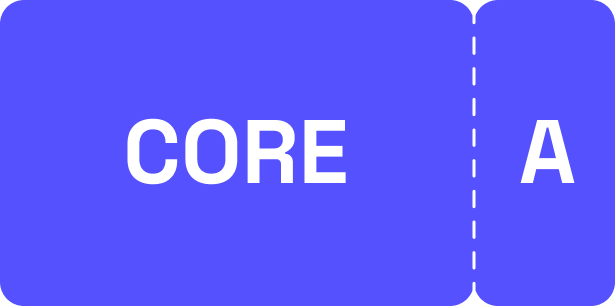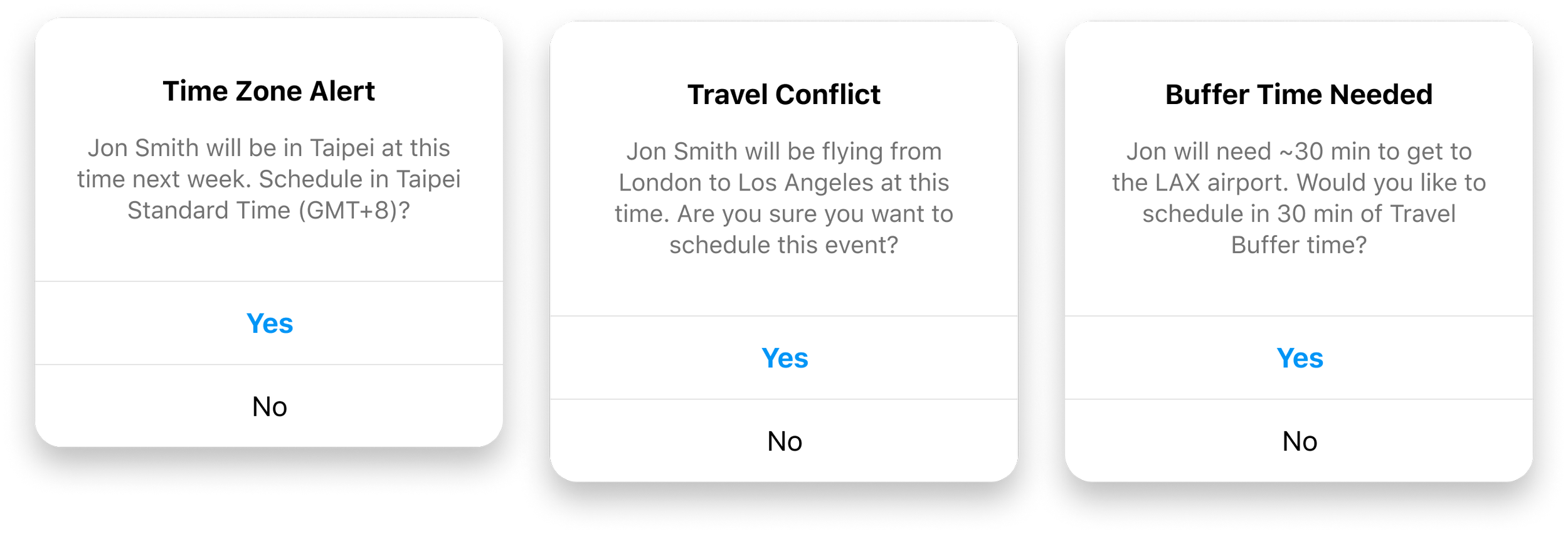
calendar
redesigning a calendar management tool for traveling executives
summary
This was a quick 1-day design exercise to challenge my rapid problem solving skills. The goal was to provide design recommendations and solutions for an executive calendar management tool for traveling executives.
results
Presented a 37-page slide deck detailing process and solution
Ideated and mocked 4 core and 3 “nice-to-have” solutions from the perspective of both user groups
role
Product Designer
timeline
1 day (8 hours)
background
Valentina leads sales and business development for a Fortune 500 company. She travels 3 out of 4 weeks in the month, and when she travels, it’s almost always internationally. Between all her travel to different time zones and a busy meeting schedule in different cities, she and her executive assistant both find it challenging to manage her calendar to ensure she shows up to the right places at the right time. From this original prompt, I derived a guiding question:
How might we design a tool for:
Assistants: to easily sort out all logistics?
Executives: to clearly understand it to follow through?

Solutions
A = Assistant | E = Executive
1A. Smart Communication
E: Listen to a daily schedule rundown and follow along to prep yourself for the day.
“Good morning Valentina, it is Wednesday January 25th. You have four meetings today. You will start with a 45 min Sales Weekly Sync at 11:15AM, followed by two 15 min 1-1’s with your direct reports Sam and Sarah. You should head to the Frankfurt Airport at 1:30PM for your 4:25PM flight to London with United Airlines. Upon arrival, you will check into Marriott Central London. London is 1 hour behind Frankfurt, so you will be there at 5:30PM London time after a two hour flight. Your first meeting the following morning will be Exec All Hands at 9AM in the London main office.”
“Welcome to London, Valentina. It is Thursday January 26th. You have three meetings today. You will start with a 45 min Exec All Hands at 9AM, followed by a two hour focus block before Lunch with Bryan. You have a call with James and Jessie from the Sales Department at 3PM before a Business Review…”
1B. Smart Communication
A: Send automated reminders to your exec to help them stay on track with their day.
E: Be reminded for upcoming events throughout the day.
2. Check In to Events
A: Know whether or not your exec is attending the right events at the right time.
E: Let your assistant know you are on track with the day’s schedule.
3a. Scheduling Success
A: Schedule events on your exec’s calendar with prompted time zone information and their personal preferences in mind.
3b. Scheduling Success
A: Schedule events on your exec’s calendar with prompted time zone information and their personal preferences in mind.
4. Local Integration
E: Seamlessly navigate to meetings in a new place with local navigation and transportation apps directly embedded into calendar events.
5. Find Your Exec Map
A: See where your exec is during working hours to make sure they are in the right place at the right time.
E: Share your location with your assistant so they can stay up to date on your latest and help with unforeseen circumstances.

the process
research
How might we design a tool for:
Assistants: to easily sort out all logistics?
Executives: to clearly understand it to follow through
To get familiar with the problem space, I looked into 3 calendar management articles, 2 calendar management videos, and 6 existing scheduling tools.
Existing calendar tools do not provide enough clarity and structure for a traveling executive’s schedule.
2. synthesis
Hypothesis
because Executives and assistants do not have time to figure out complicated time zone calculations, An automated calendar will make scheduling and navigating meetings abroad easier.
Design Goal
Empower assistants to manage executive time well abroad.
Design Solution
inform users, reduce error, and facilitate efficiency.

3. ideation
Brainstorming
Based on the three design requirements (inform users, reduce error, and facilitate efficiency), I brainstormed ideas under two HMWs.
Categorized Ideas
From there, I chose the ideas that most directly corresponded to my goal to help users be informed, be correct, and be efficient.
Mid-Fi

4. Iteration
If I had more time, these are some things I would do:
Explore other extra ideas. For example, what would a visual itinerary look like? This would be able to visualize how the executive will travel in the future with information like dates, meetings, flight times, and local zones. Sort of like a preview of your journey ahead, like Google Maps’ new flythrough feature.
Consider edge cases in more depth. What happens if a meeting is cancelled? Or a flight? How does the system respond to inconsistencies or irregularities? What about time conflicts?
Show different devices. While the traveling executive might always be on a mobile phone, their assistant might be on a desktop. What would the interface look like for someone scheduling events on a laptop? In addition, if our executive is always on the go, designing for tablet and watch interfaces would be required as well.
Other things I would like to iterate on:
To better reduce error, instead of dialogs/ popups that correct you, it would be best to make the deign preventative so that users do not have the opportunity to be wrong. I would explore designs that fit in more in the beginning of the input process.
Instead of local integrations aka local navigation and transit apps taking up so much valuable real estate in the event details page of solution 4, I have a toggle in settings so this area can be hidden or shown, as well as a caret for users to show or hide it manually.
A settings page showing how this would all work, where users can edit their personal preferences for focus time, buffer time, types of meetings during what times of day, color coding, etc.
final thoughts
This was a fast-paced design process where I had to make a lot of assumptions about the problem space. Especially in a hypothetical prompt where not much is known, assumptions really help ground my direction and allow me to move forward quickly.
With these defined constraints, I was able to consider different user perspectives and needs within the scenario I was designing for. It was definitely challenging to think about both the executive and the assistants needs, but doing so made this conceptual exercise very valuable.
Overall, this was a quick but rewarding project that challenged me to think fast and be creative!

